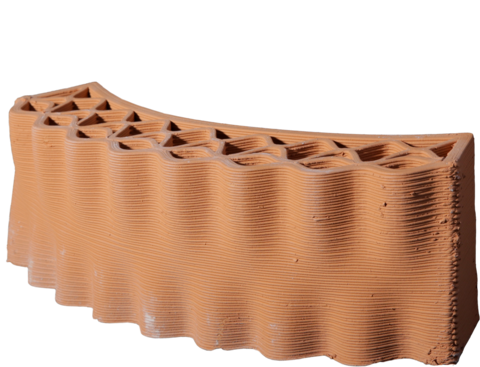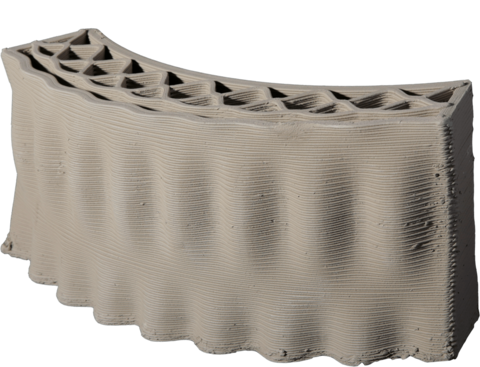On-site additively manufactured clay wall
Life Cycle Transition
About the Product

1:10 ceramic model
(Manufacturer: WASP)
1:10 ceramic model
(Manufacturer: WASP)Clay is a type of soil composed of sand, clay and silt. It is formed by the weathering of rock layers and is regionally available almost everywhere.
The additive manufacturing method enables the production of material-saving wall cross-sections whose thermal insulation capacity can be increased by integrated cavities with stagnant air and self-shading surfaces.
Additively manufactured clay walls are suitable both as building envelopes and as load-bearing components.
As long as the clay mixture has not been contaminated with plasters or similar substances, the building material can be recycled after deconstruction. The prerequisite is that the properties of the clay minerals have not been changed by the choice of additives, so that the clay can still be replasticised by adding water. Organic additives can lead to mould/sponge formation in the clay walls, making recycling no longer possible.
The Italian company WASP has developed a clay printer consisting of a main unit with a 6.60 m printing area, thus enabling the holistic production of walls on site. This main module is said to be infinitely expandable, allowing projects of any size to be realised using additive manufacturing.
Manufacturer: WASP